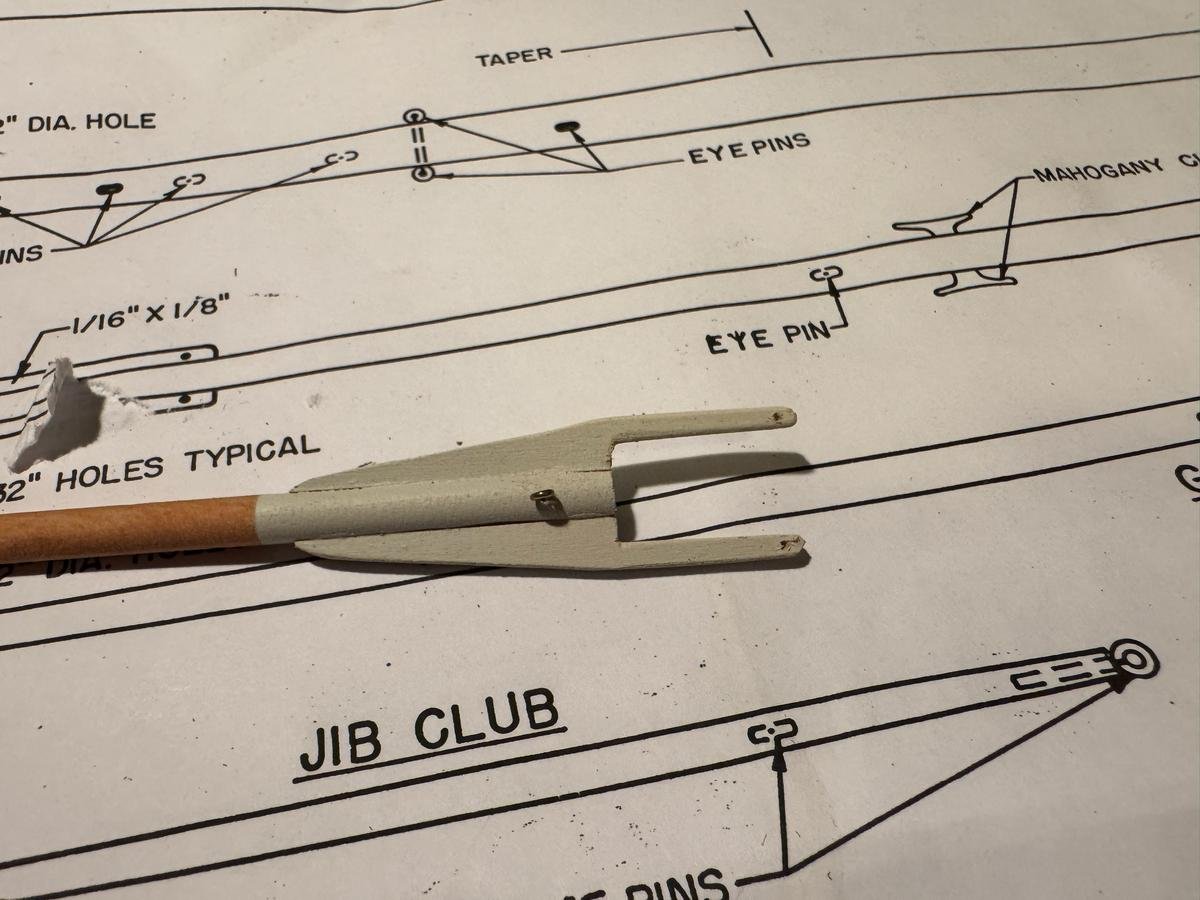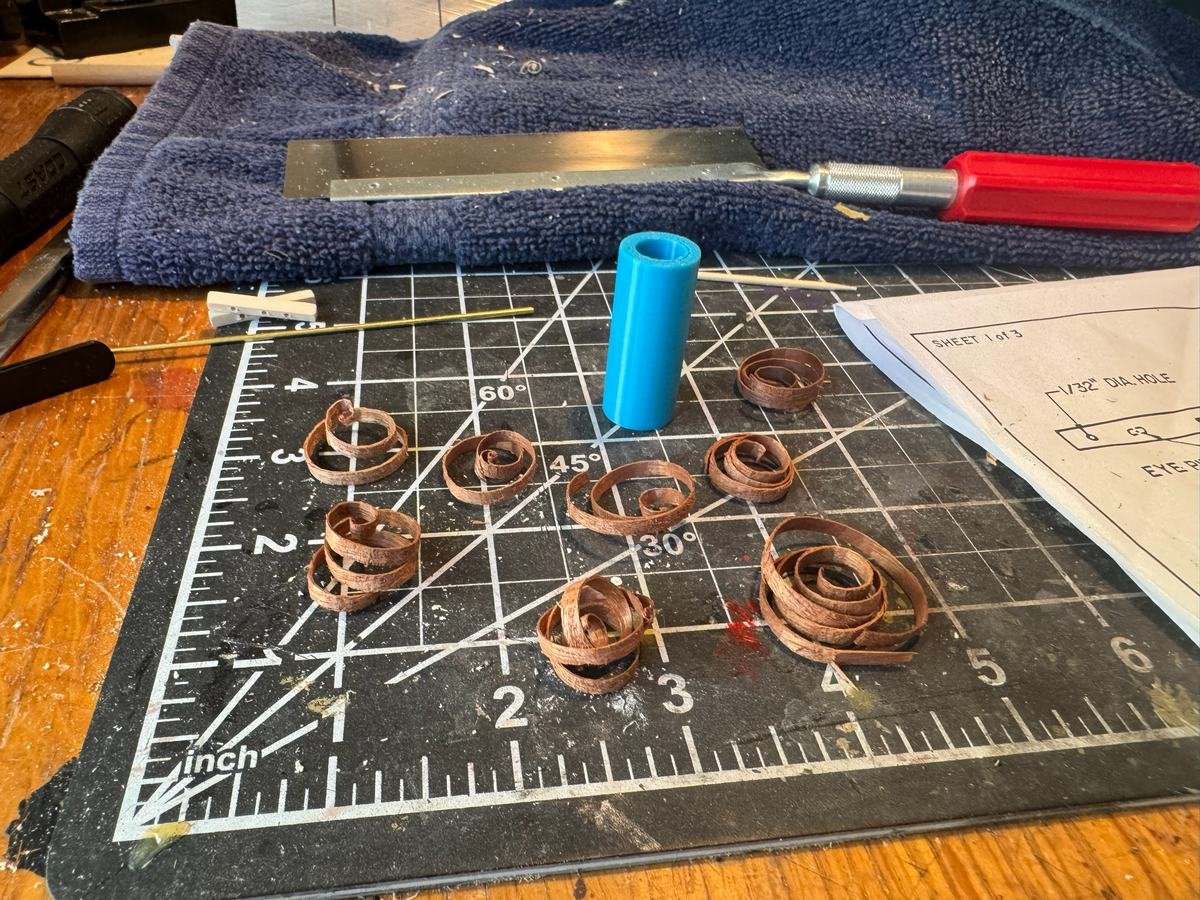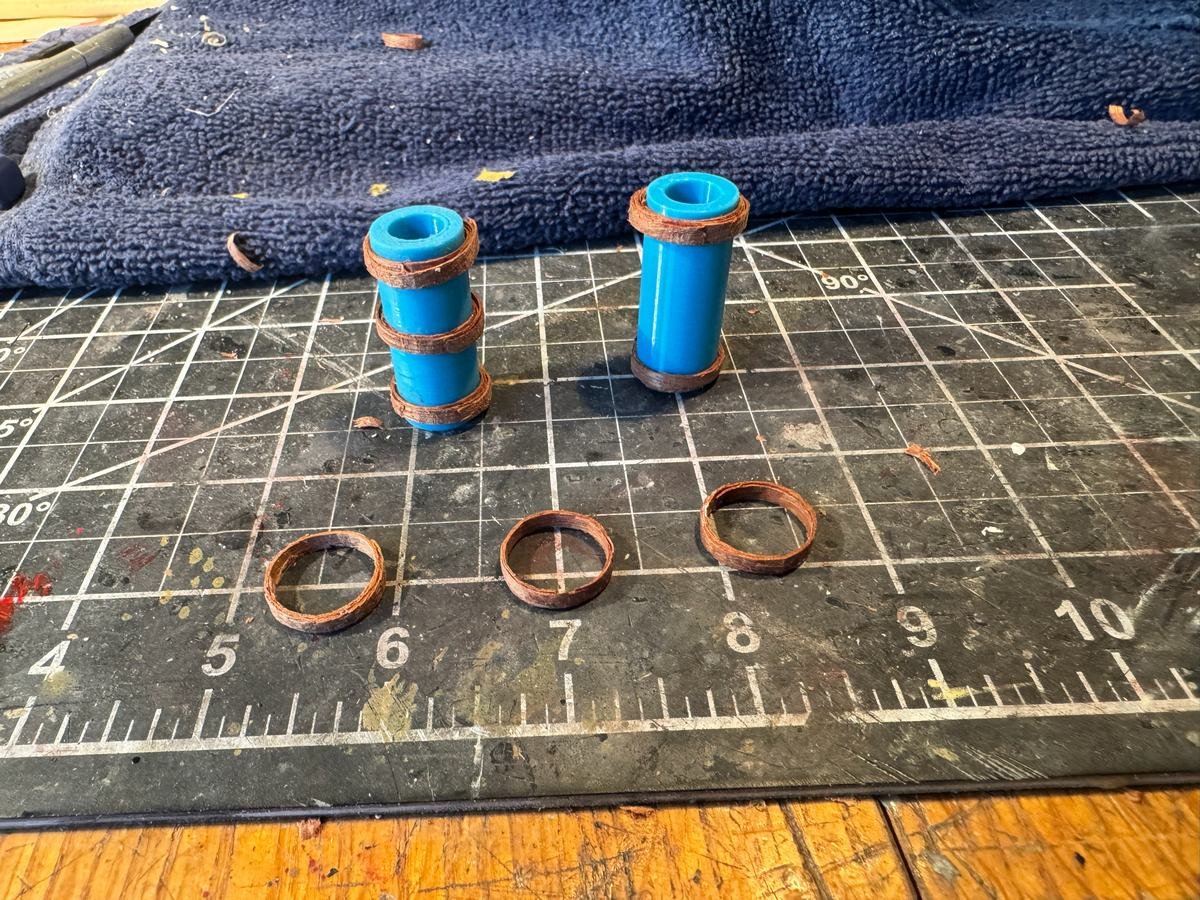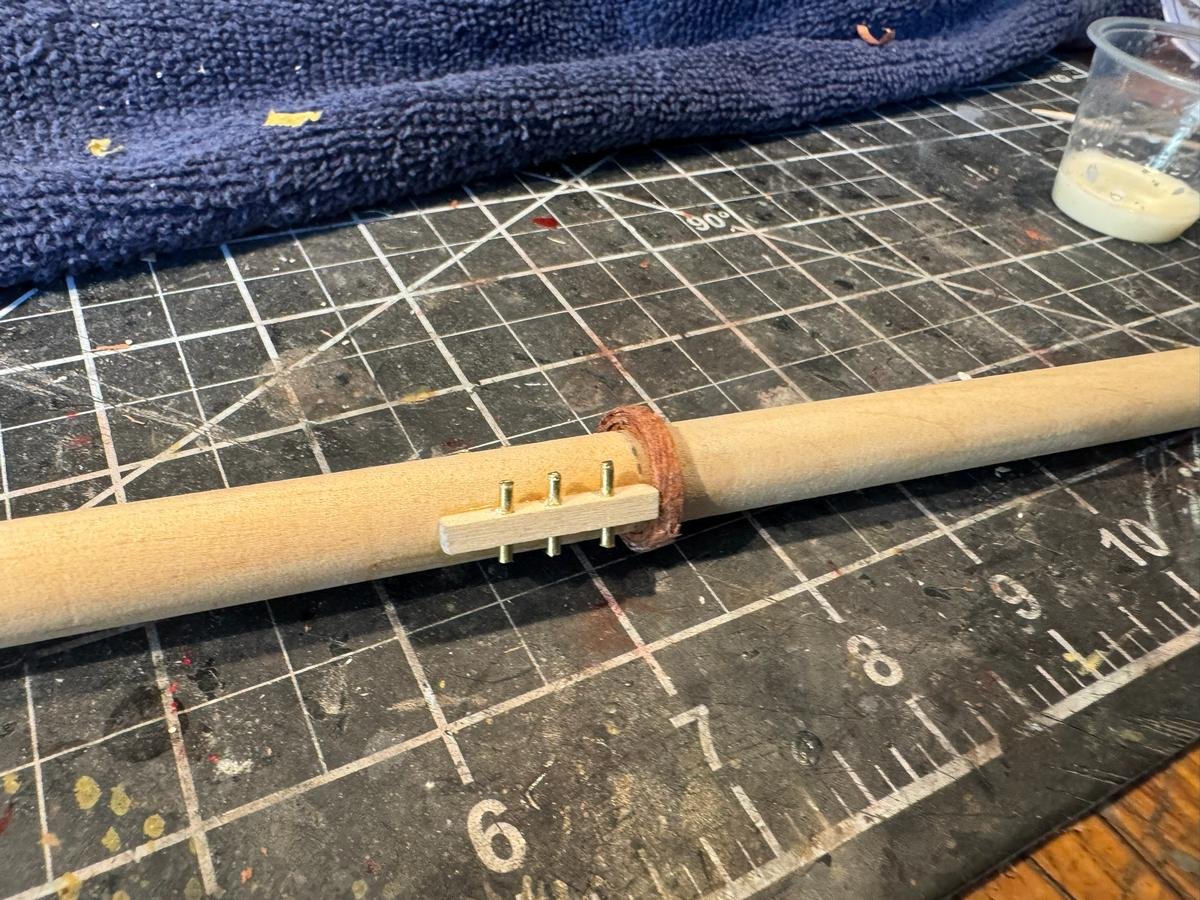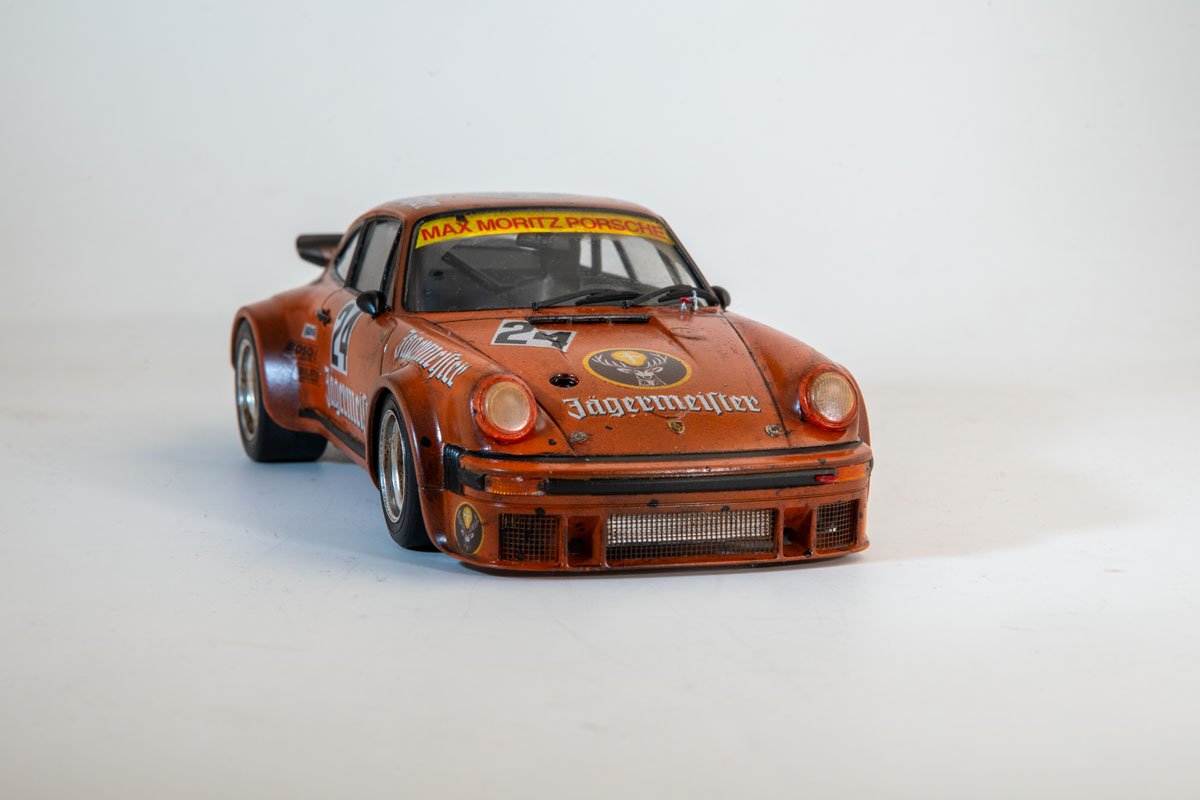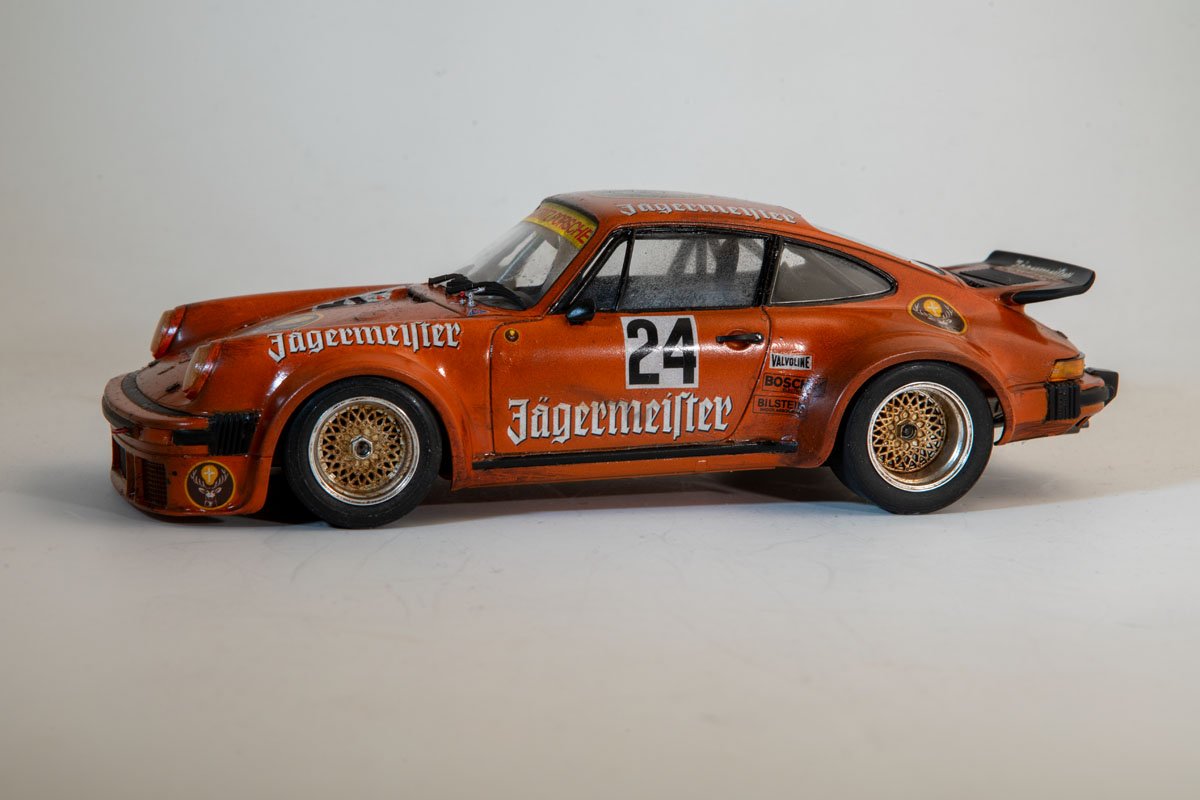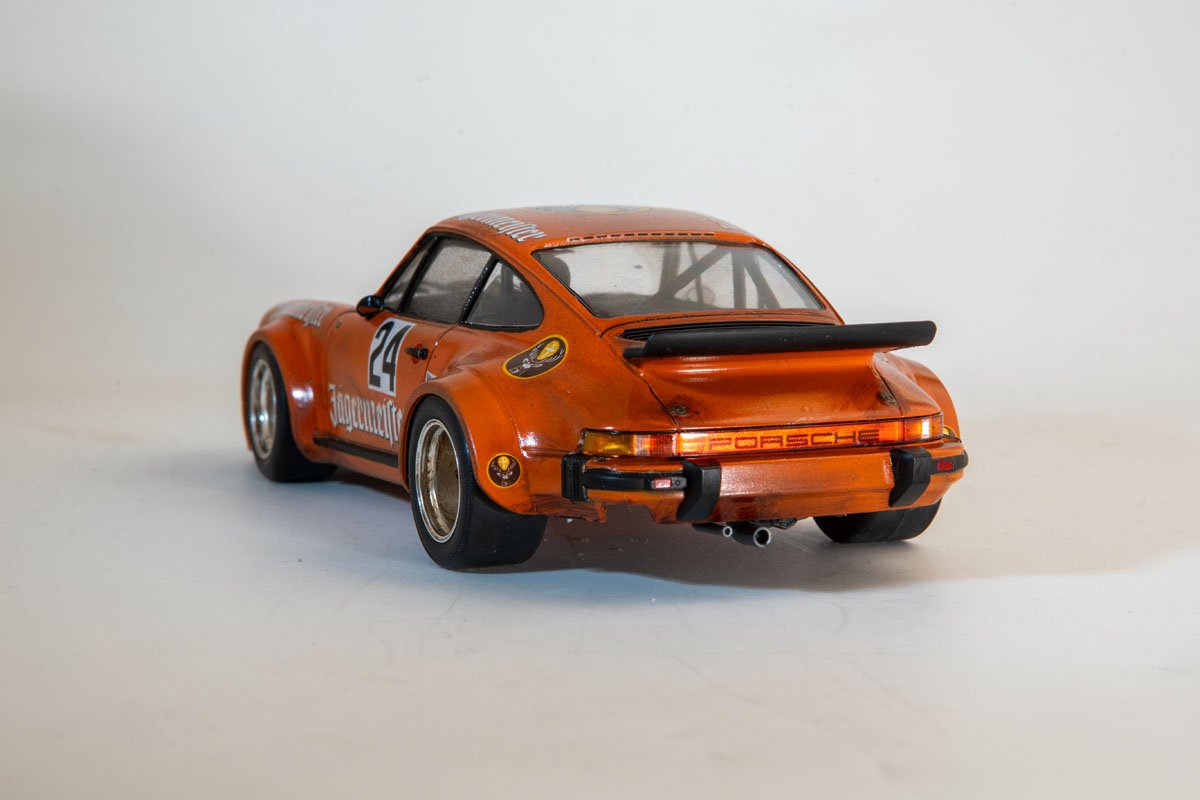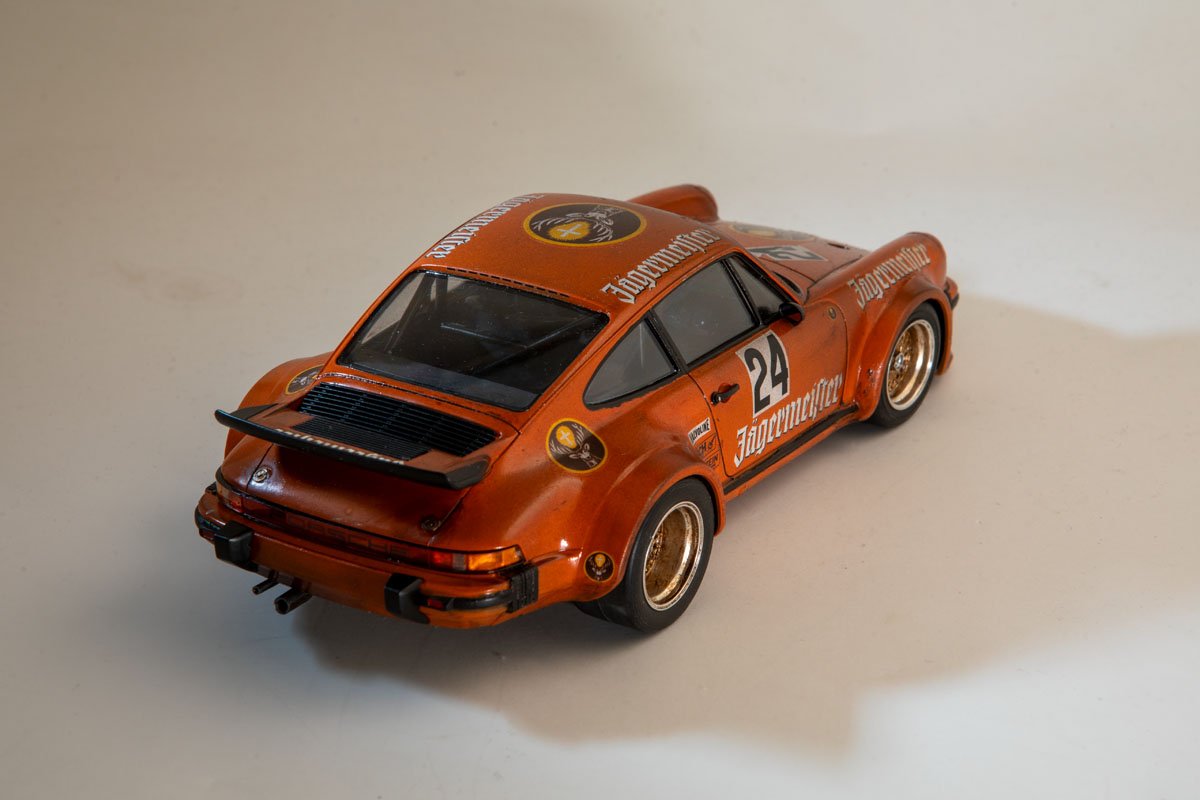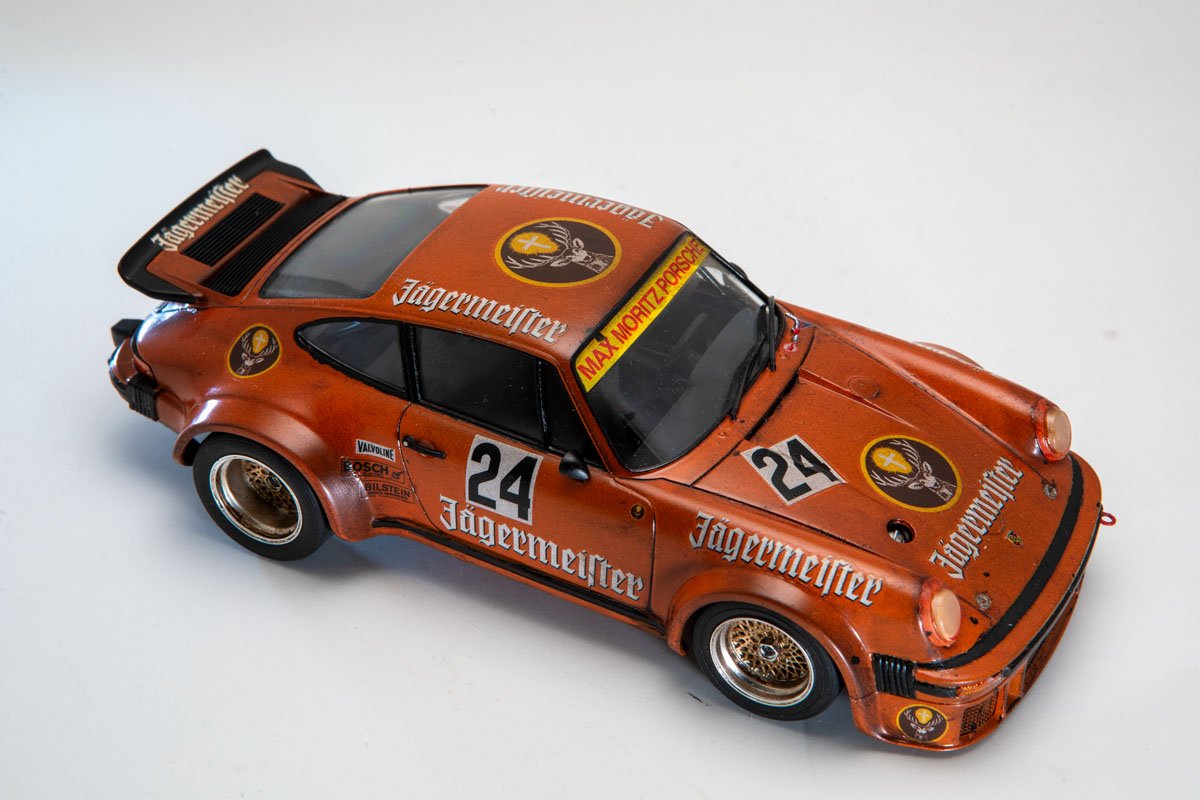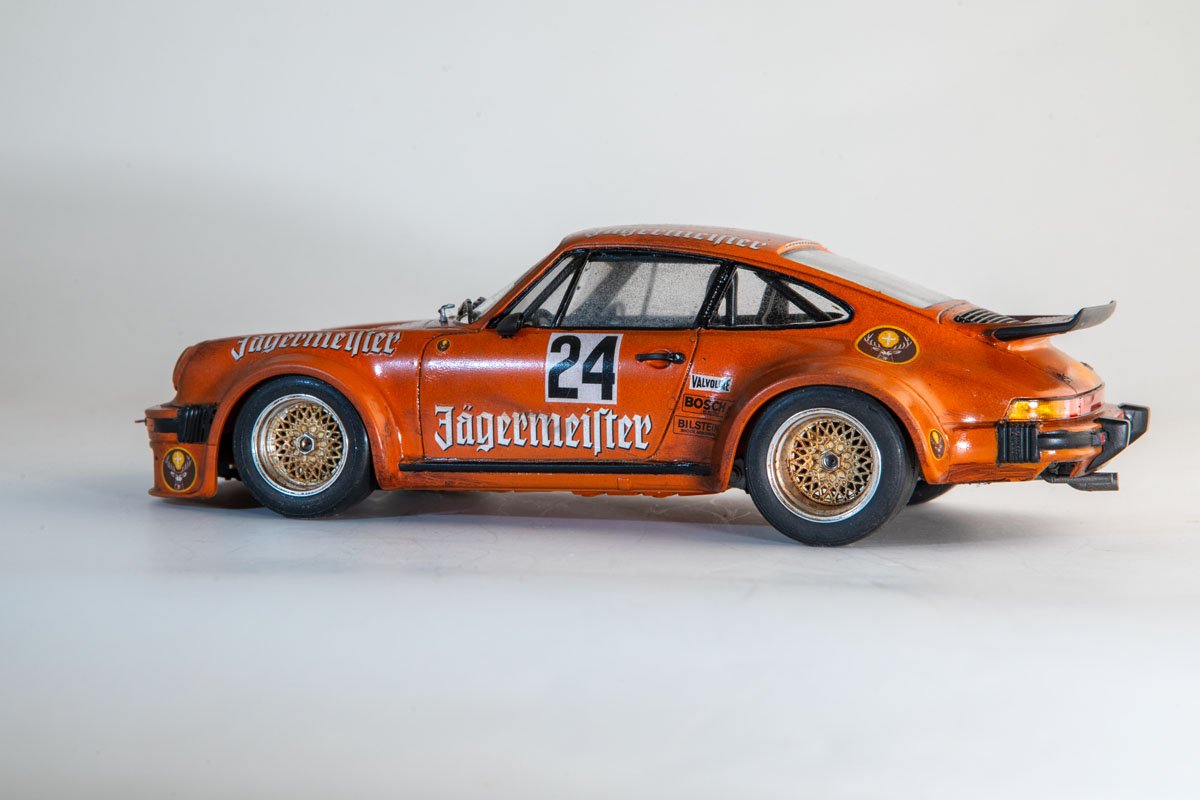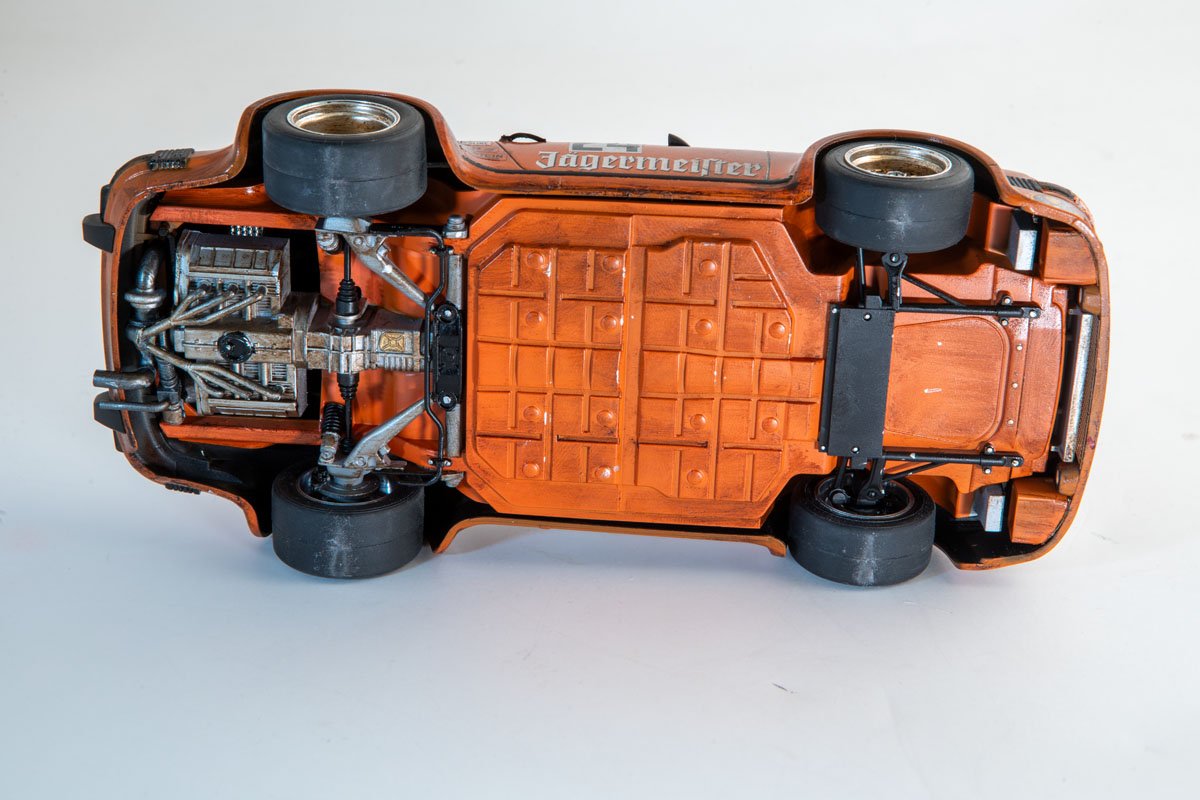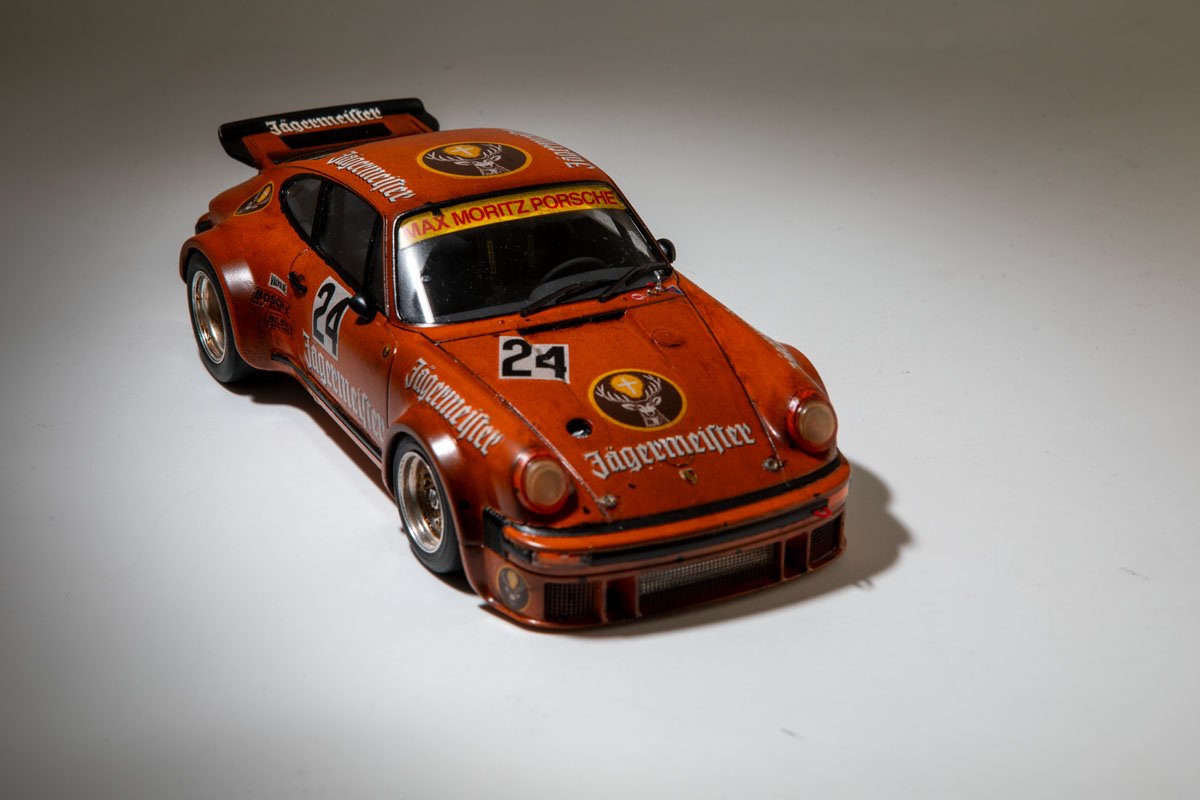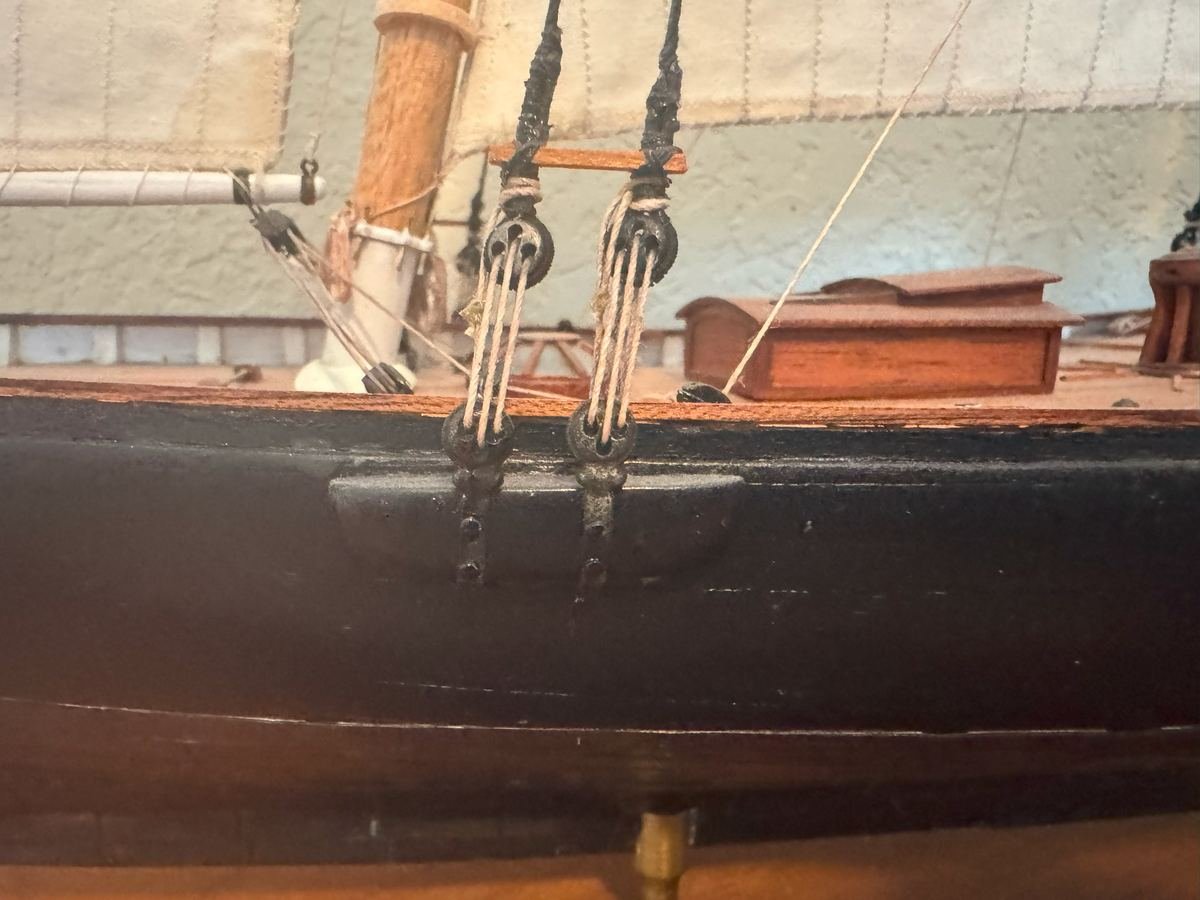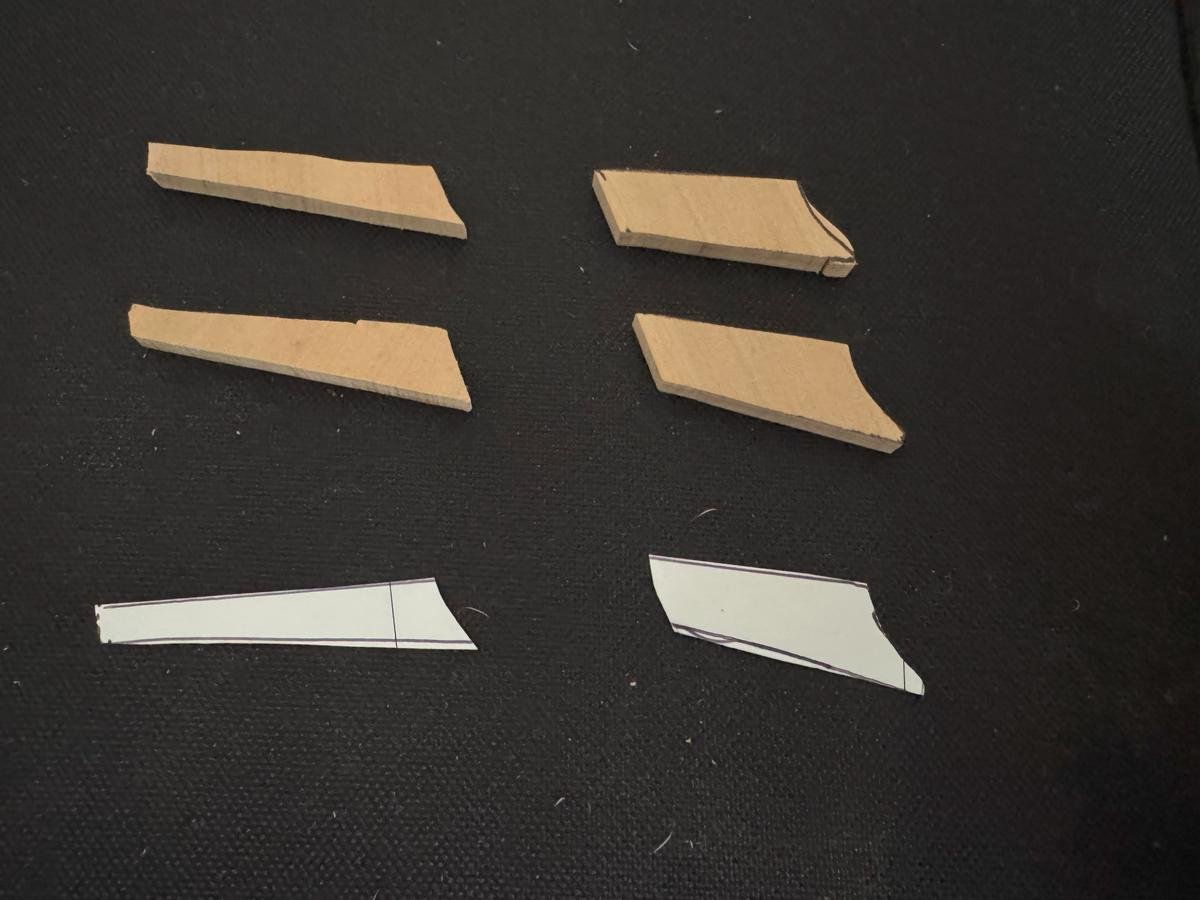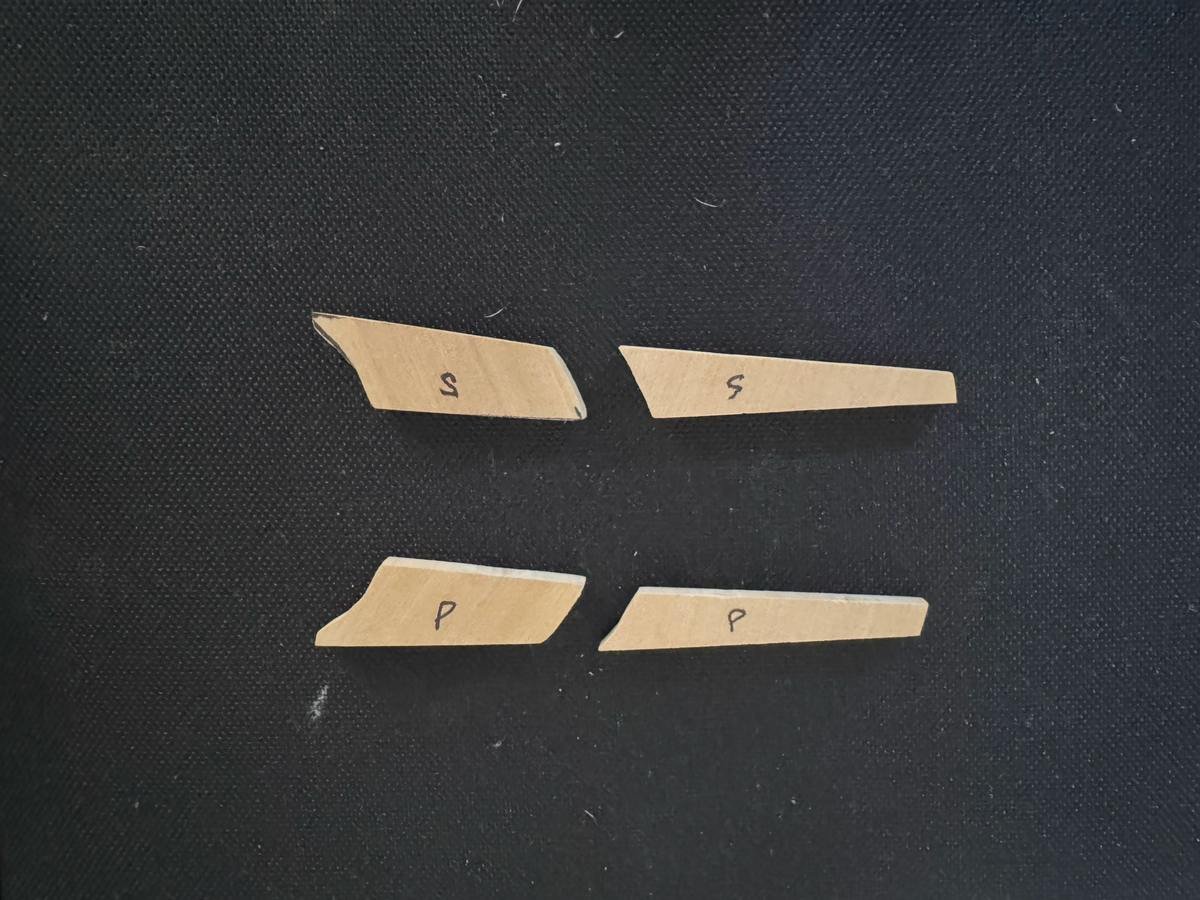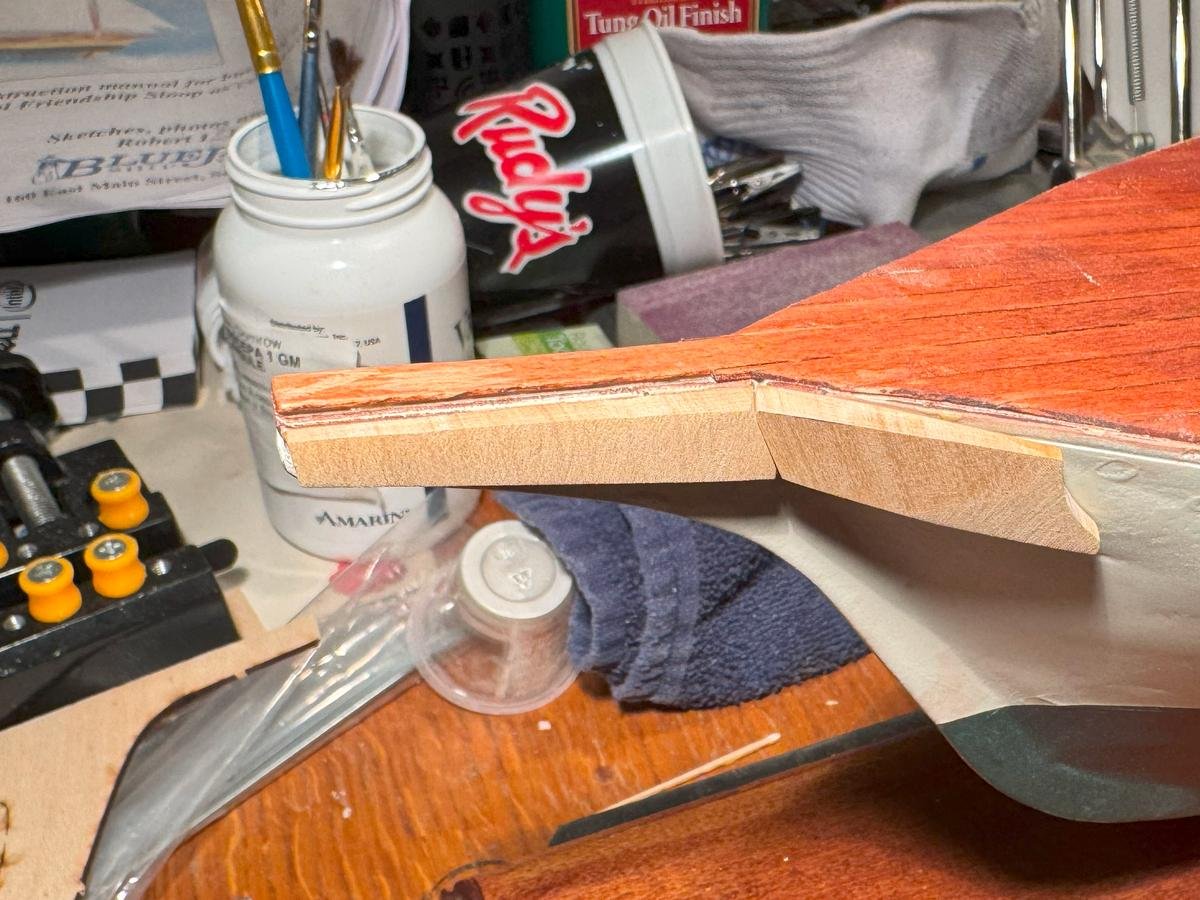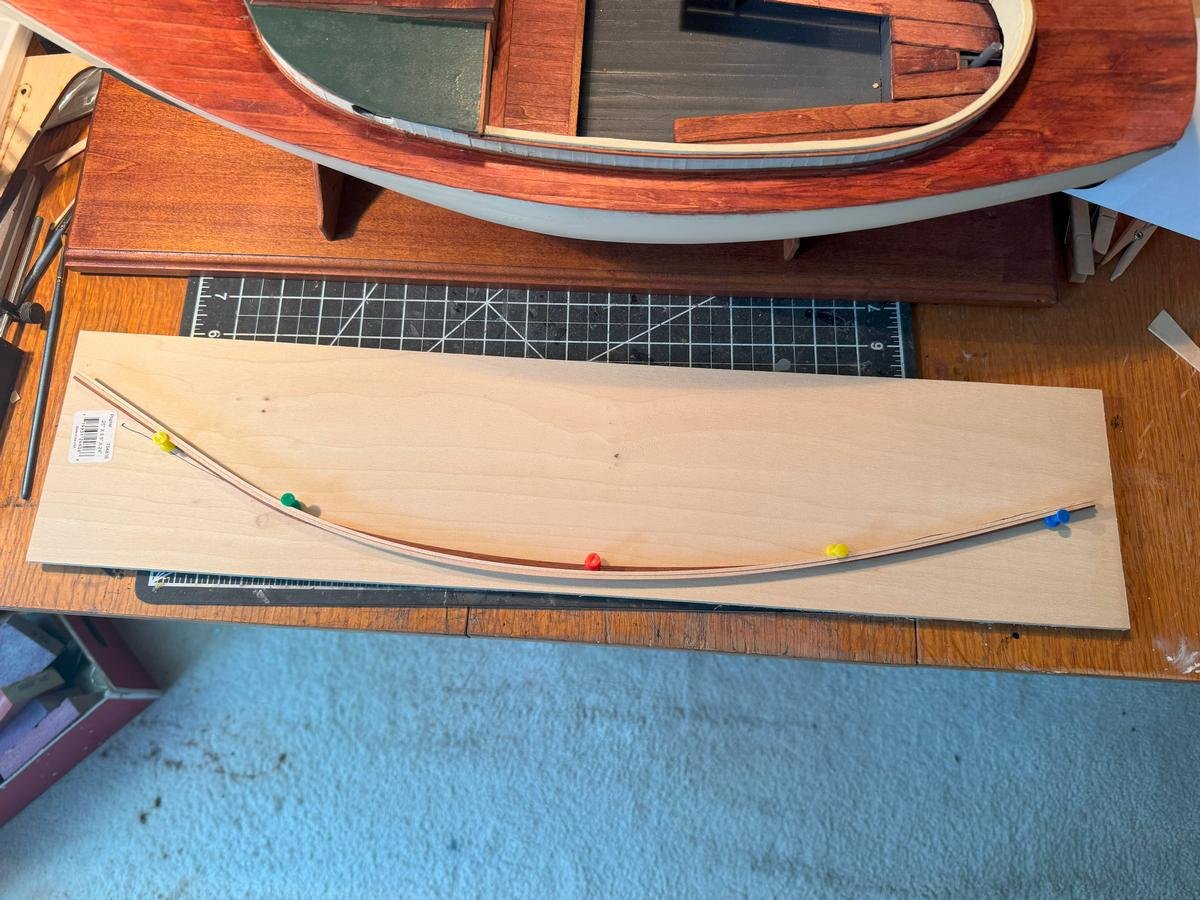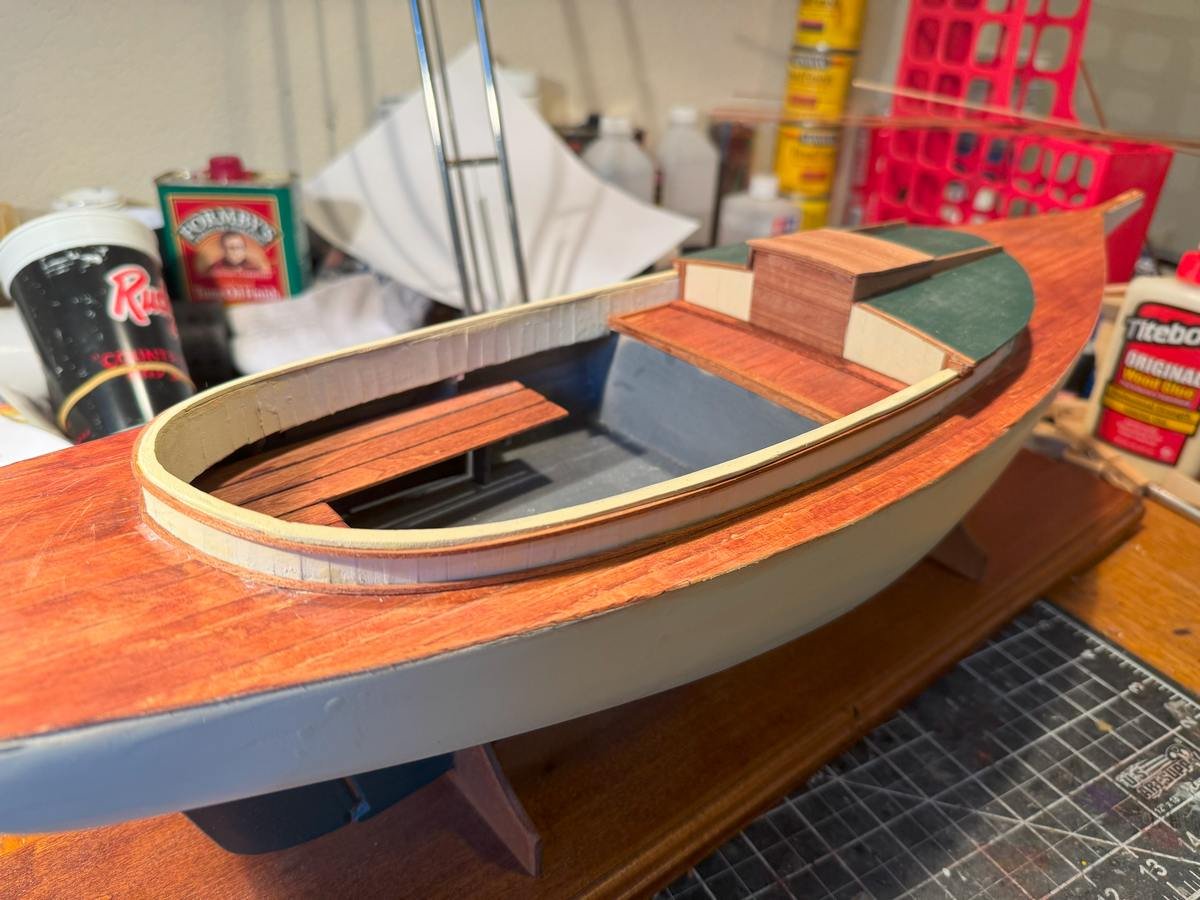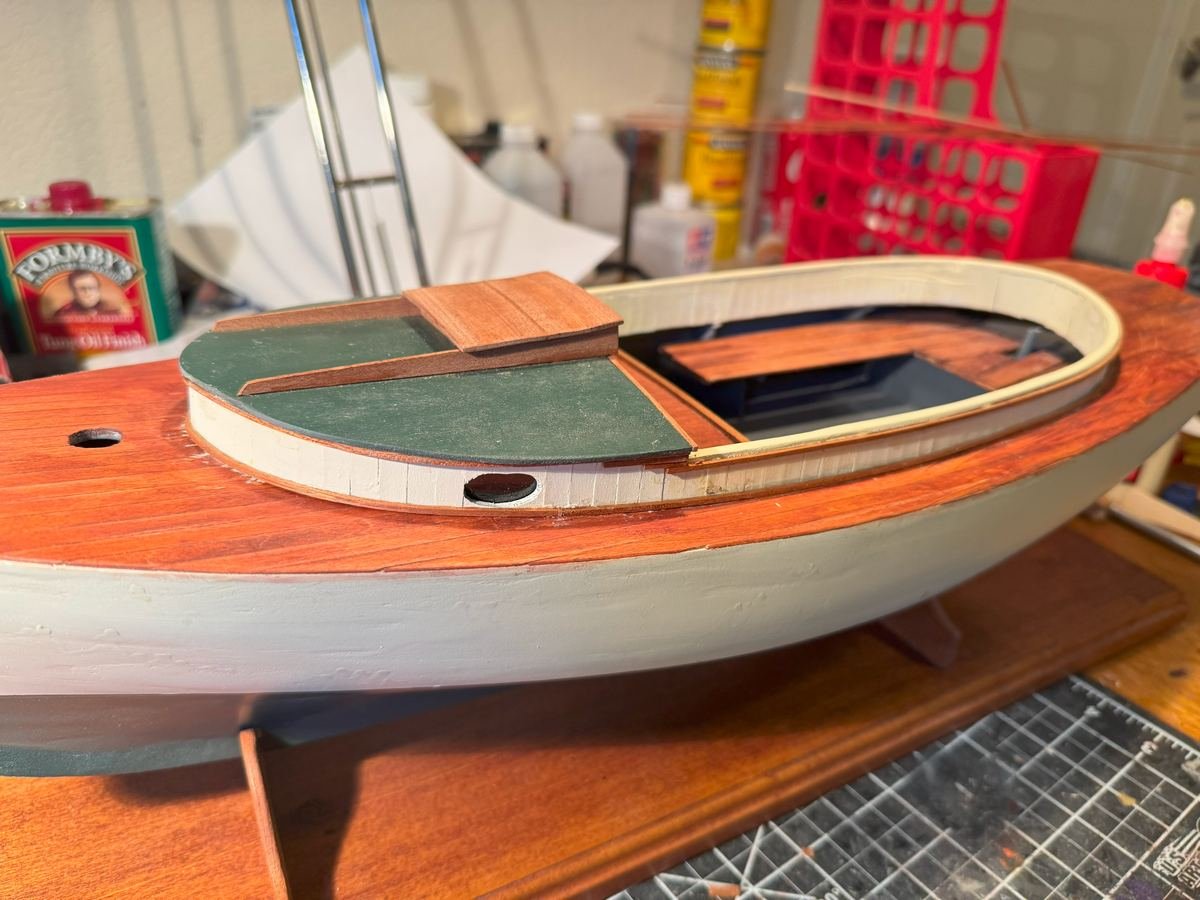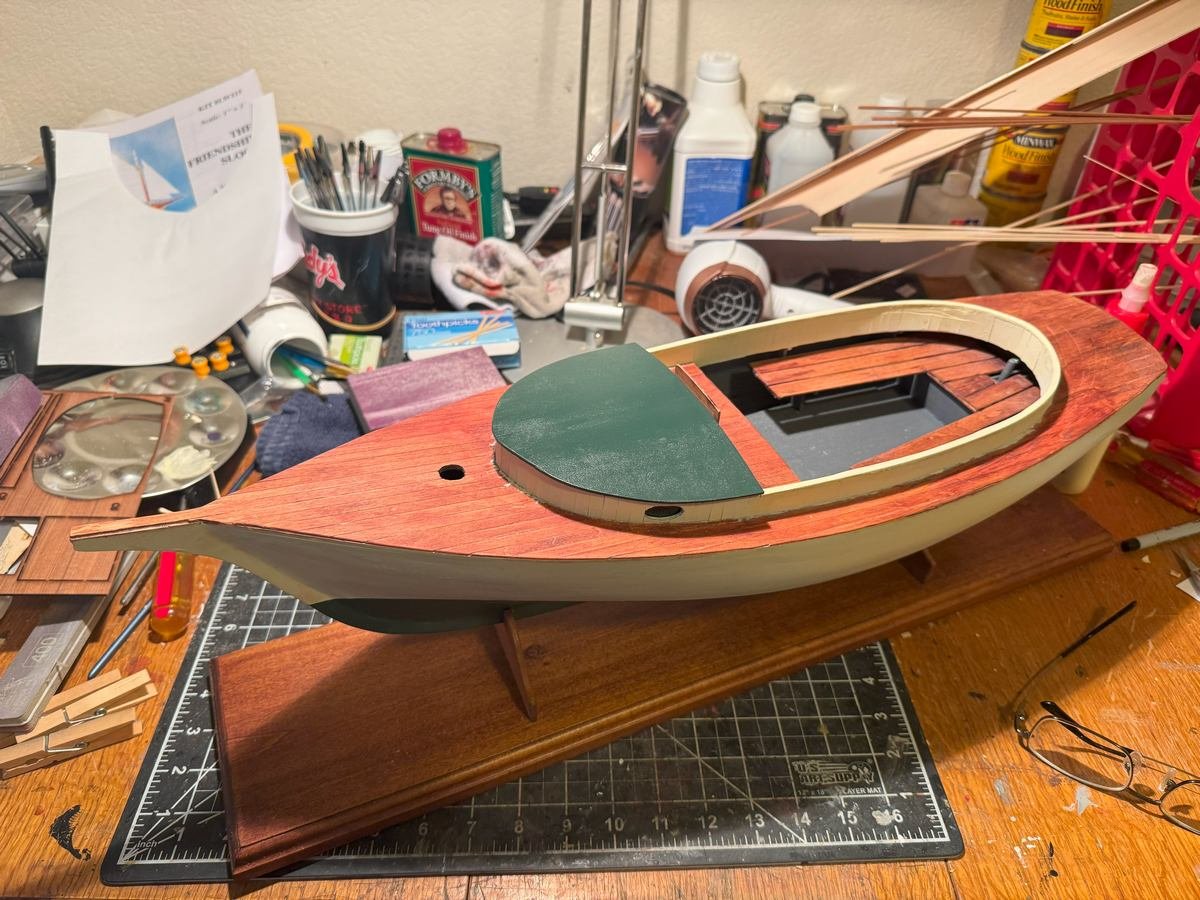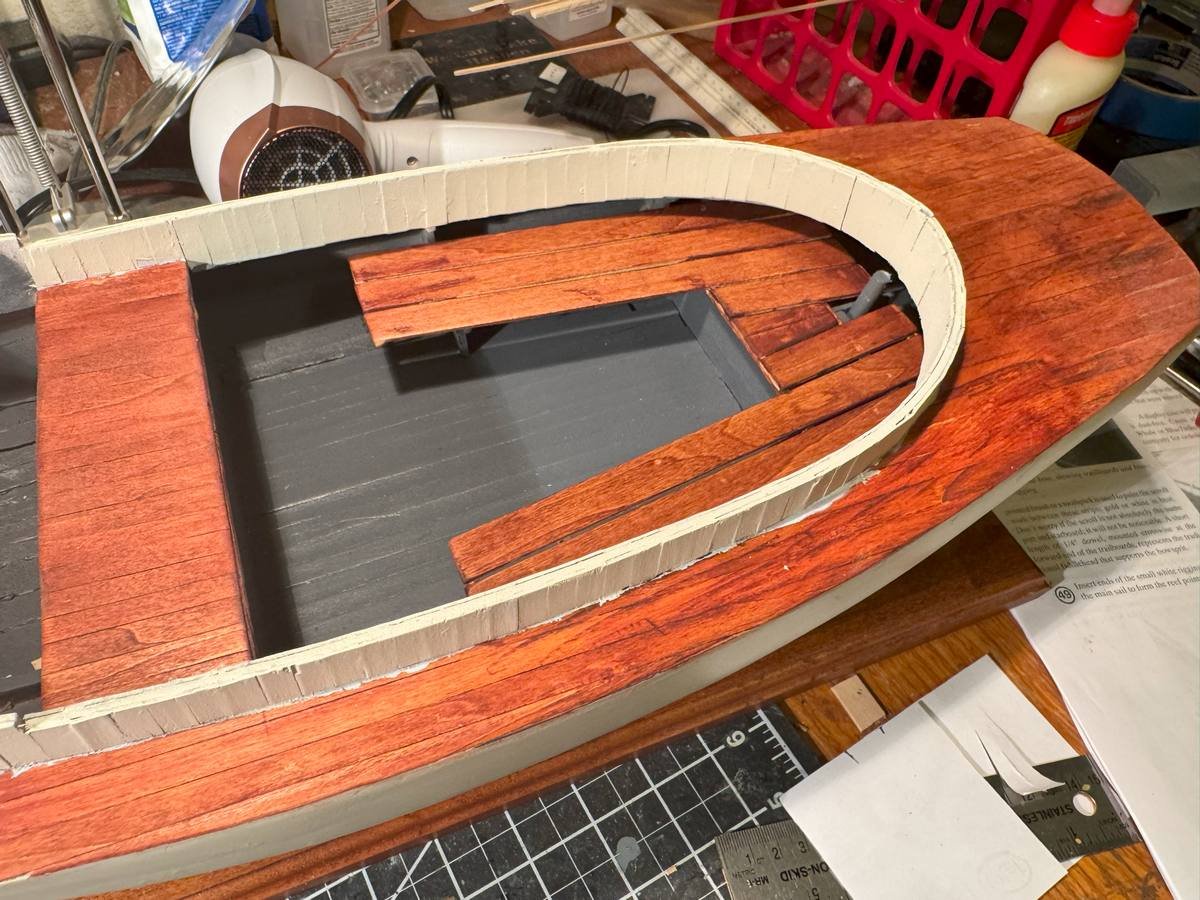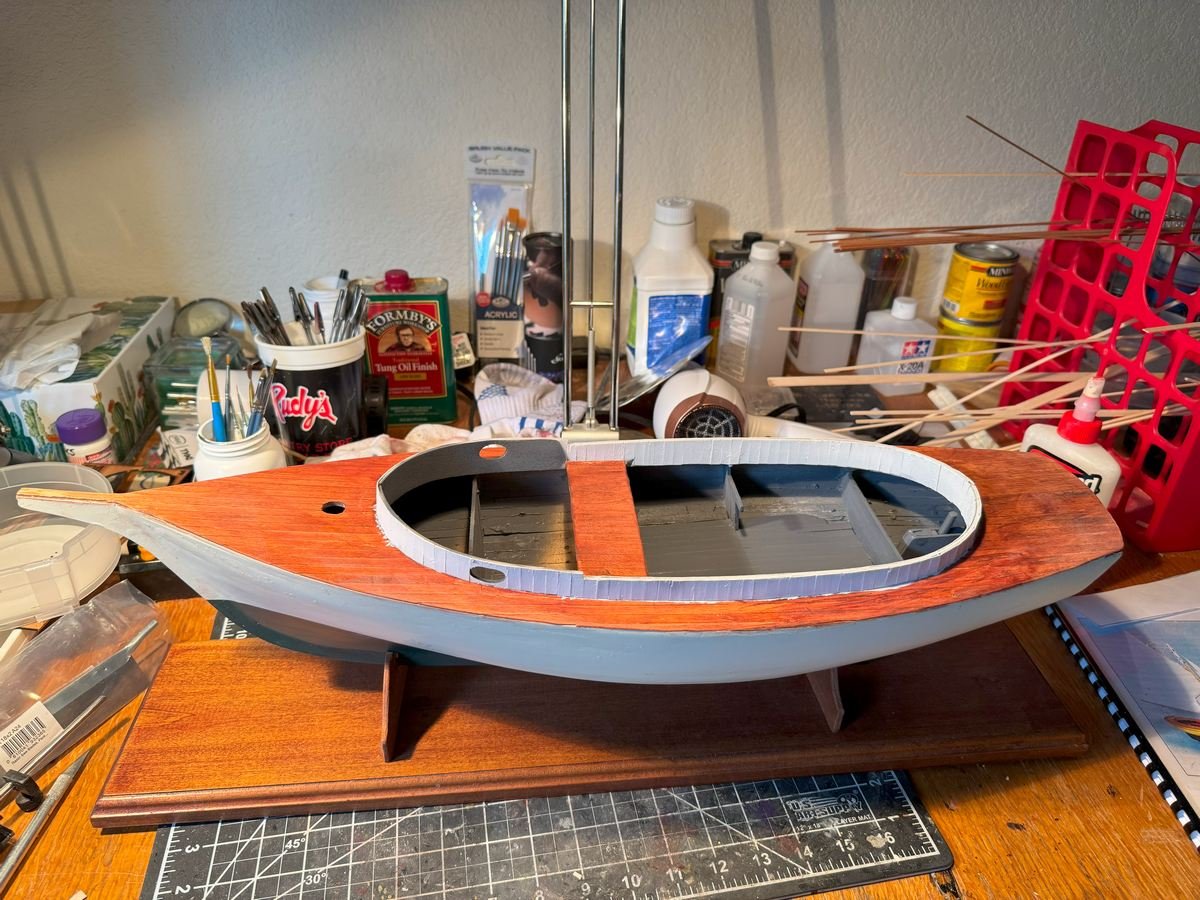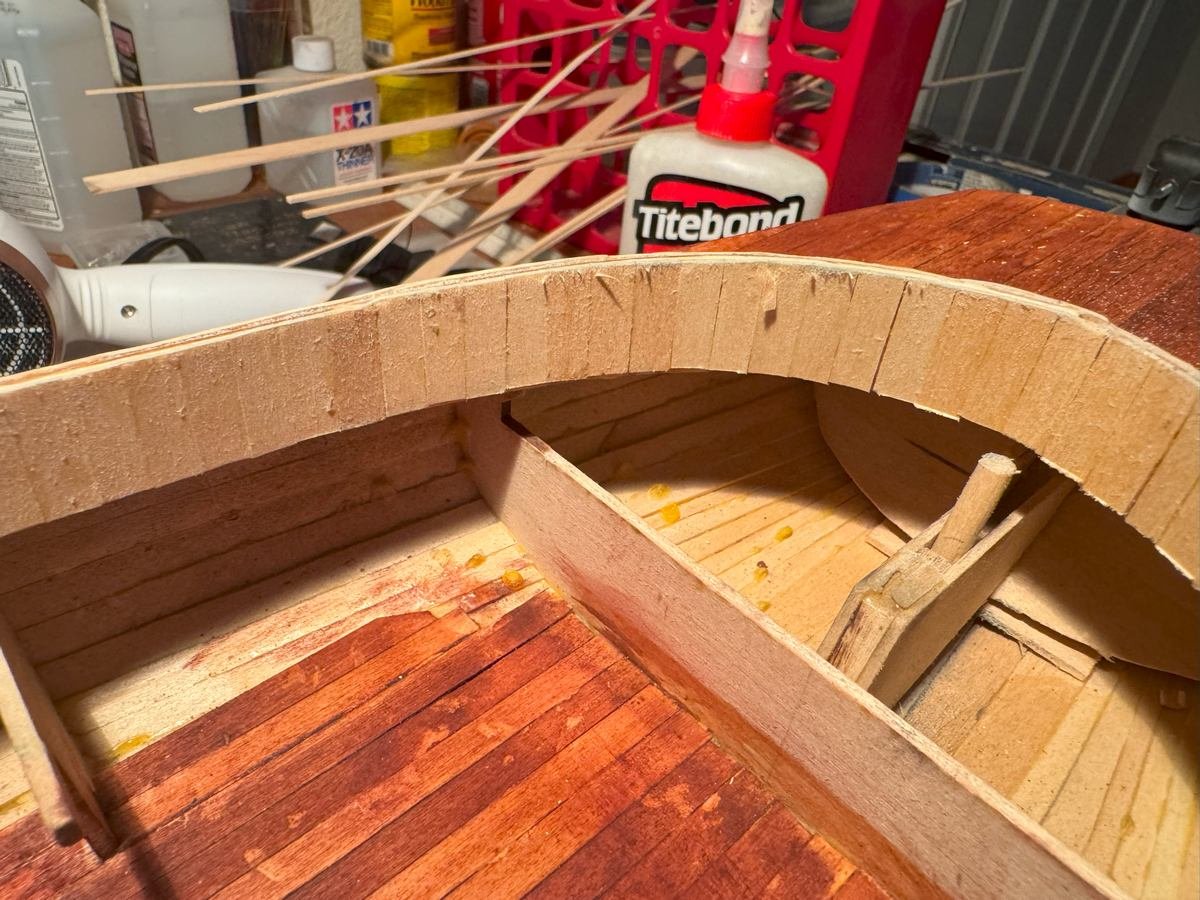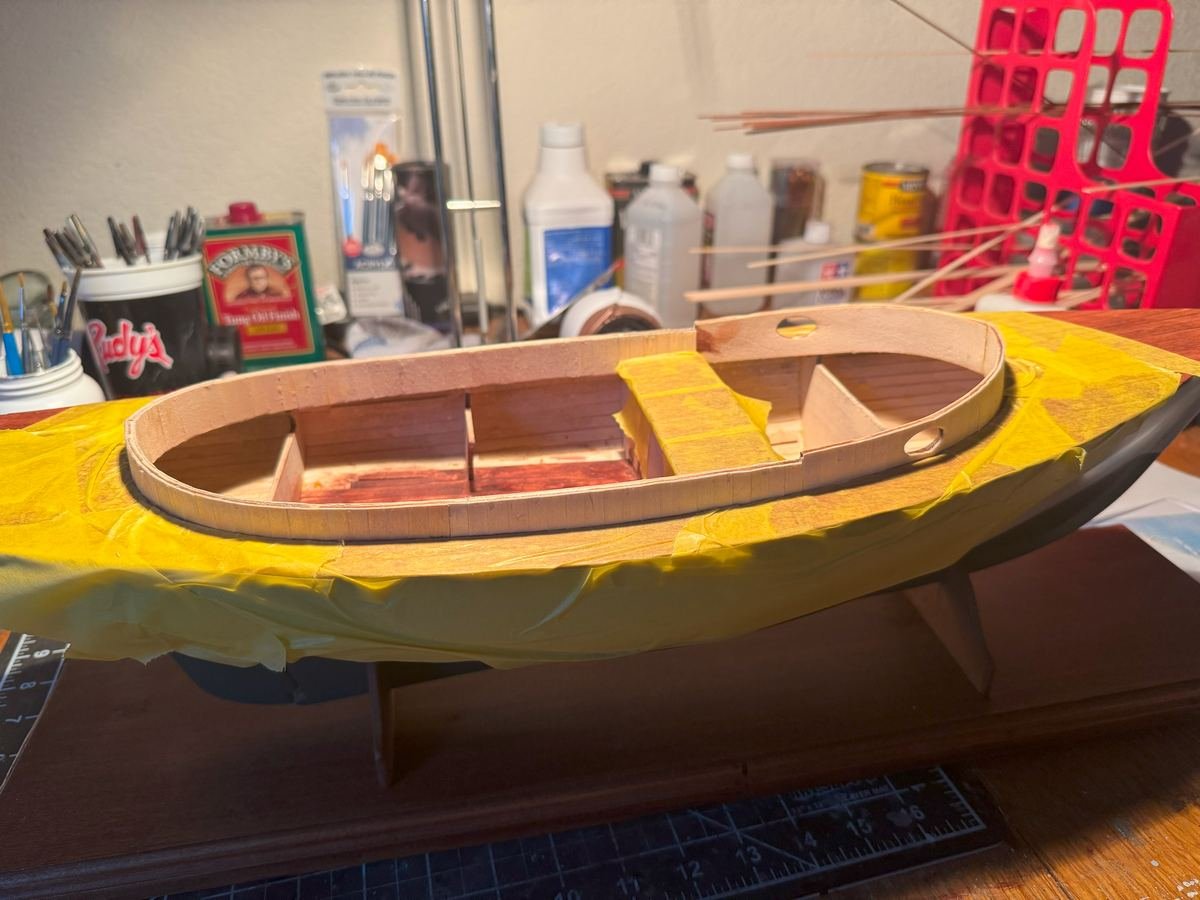
gsdpic
NRG Member-
Posts
843 -
Joined
-
Last visited
Content Type
Profiles
Forums
Gallery
Events
Everything posted by gsdpic
-
Thanks for the likes and for the comment, Glen. I have the mast and spars almost done now. I added the jaws and other wooden bits and I've painted some of the ends, and stained the areas where the various sails are attached. Then I added the eyebolts specified by the plan and drilled holes as well. The one thing yet to do....the boom is supposed to have a couple of cleats on it. I've not yet decided if I am going to use the metal cleats supplied by bluejacket or make some wooden ones. I don't have any sort of drill press, but this cheap amazon clamp proved to be useful while drilling holes. Other views of the gaff, boom, and mast:
- 90 replies
-
- Friendship Sloop
- bluejacket shipcrafters
-
(and 1 more)
Tagged with:
-
Lotus 72D by gsdpic - FINISHED - Tamiya - 1/12 - PLASTIC
gsdpic replied to gsdpic's topic in Non-ship/categorised builds
That's a good question, though it has been 2 years and I do not remember for certain. As you can tell from the first post, the kit I had was rather old....it was not one of the new re-issue kits. I almost wonder if the yellowing of the clear fuel lines had just happened naturally. Otherwise, maybe I just used some Tamiya clear yellow on the tubes. -
This time with some pictures. Continue to work on the mast and spars and the mast rings. Similar to when I built the America, I am making wooden mast rings. I start with shavings created with a small plane that naturally curl, wrap them around a circular object and coat them liberally with diluted PVA. More details below. First, I start with the shavings and the jig/former. For the shavings, I used a small plane on some of the leftover 1/16th x 1//8th mahogany. They tend to be pretty rough but I am hoping I can smooth things out adequately. As for the former, I have exploited at least 1% of the potential of 3d printing by printing this tube that is 5/8ths of an inch in diameter, to wrap the shavings around. The mast is 1/2 inch in diameter so this will allow the mast rings to fit easily over the mast. Here you can see 5 rings wrapped around two formers, and three rings that I have removed from the formers. To wrap the rings, I start by using CA to glue on end of the shaving to the tube, then wrap it around securing the end with more CA. If I need to add more layers, I grab another shaving and secure it with CA just on the ends. Once satisfied, I brush on a bunch of highly diluted PVA and let it sit over night to dry. I then sand the outer surface of the rings while still on the former, try to remove the ring from the former without breaking it, then carefully sand the top and bottom surfaces. Below is the main mast, the end that goes into the deck on the left. The picture shows the boom rest, created similarly to the mast rings, as well as one pin rail. There is a second identical one on the other side. And finally, the end of the gaff with its jaws, as well as the simple jib club. I still need to do the main boom....the dowel needs to be cut and tapered and then jaws added. then all the spars need to have some holes drilled and eye pins put in place. I also still need to figure out exactly which parts will be painted vs stained.
- 90 replies
-
- Friendship Sloop
- bluejacket shipcrafters
-
(and 1 more)
Tagged with:
-
Lotus 49C by DocRob - FINISHED - Ebbro- 1/20 - Plastic
gsdpic replied to DocRob's topic in Non-ship/categorised builds
Looks great to me! I’ve built the ford dfv 3 times, all in 1/12th scale from Tamiya. Yours looks just as good at the smaller scale. The fuel lines and spark plug wires really help. -
Just another quick update....I have resumed working on this, at least a little bit. It looks like the lack of mast step will be a non-issue. The plans show the main mast tapered both top and bottom (below the deck) but the planking near the keel in front is pretty close to the keel and leaving the lower part of the mast untapered, it fits in pretty snug from side to side. As for front-to-back, there is a bulkhead just a little ahead of the hole for the mast. I channeled Glen McGuire, pretending the mast hole was the opening of a bottle, and glued a few strips of wood to that bulkhead, in line with where the mast will be. When I place the mast I can glue it to those strips and it will be aligned pretty well for and aft as well. The plans don't actually indicate the mast rake, at least not that I have seen. It appears to be perpendicular to the water line, which would mean it actually leans forward a small amount relative to the deck.
- 90 replies
-
- Friendship Sloop
- bluejacket shipcrafters
-
(and 1 more)
Tagged with:
-
Thanks Jacques. I'd have to check but I recall the keel was relatively thick. I was also thinking I could remove the head of a nail then put the head end of the nail into the bottom of the mast, then push the mast/nail into the top of the keel. We'll see. Anyway, I've completed my side project so I've moved the sloop back to the workbench and may resume working on it soon. Here's the side project:
- 90 replies
-
- Friendship Sloop
- bluejacket shipcrafters
-
(and 1 more)
Tagged with:
-
I took another break from my Friendship Sloop to build another car, the Porsche Turbo RSR type 934 from 1976. This was built from the Tamiya kit in 1/24th scale. The kit is a relatively simple curbside kit. I also have in my stash the Revell kit of the same car, with more details including an opening engine lid and frunk lid. On this build I tried something I have never done before, so I went completely overboard with it . Yes, I added weathering as if the car just completed a race. My story is that it was a very long race, with intermittent rain, and this car got stuck behind another car with an oil leak that led to a blown engine. Or something like that. Any comments or suggestions on the weathering (or other aspects of the build) are welcome. For the weathering I used some abteilung 502 oil in Engine Grease color, as well as just some light misting with the airbrush using semi gloss black, and doing some other small speckles of black or silver using a small brush. The base color of the body was splash paints jagermeister orange over splash paints light gray primer. Also used other Tamiya paints and just a few alclad metallic colors. Thanks for looking.
-
Lotus 49C by DocRob - FINISHED - Ebbro- 1/20 - Plastic
gsdpic replied to DocRob's topic in Non-ship/categorised builds
Great start, the paint work and decals are looking very nice, and the car looks like an interesting half way point between the original Lotus 49 and the 72. I've seen a few Ebbro kits on ebay and such places but have never seen the contents of the box or a build log, so it will be interesting to see how it goes together. And I know what you mean about build logs for cars, they are pretty rare around here. I just finished another car but did not bother with a build log myself. After I take a few pictures, I'll post them in the completed non-ship build section. -
As always, thanks for the likes. I've now completed the hull and just have the mast, spars, sails, and rigging left to do. Since last time, I added the two chocks on either side of the bowsprit, finished the rail on the stern, added the two travelers, put some wipe-on-poly on the unpainted wood bits, and maybe a few other minor tweaks. But in looking at the plans, I also realized that I failed to put any sort of mast step on the keel.....it is shown on the plans but I don't think it was mentioned in the instructions....and now that area is inaccessible. I am hoping that I'll be able to adequately secure the mast anyway. I am not certain, but I was also thinking that when I got to this point, I'd take a break from this build and go off to work on another project or two for a bit. So, there's a chance it will be a while before my next update.
- 90 replies
-
- Friendship Sloop
- bluejacket shipcrafters
-
(and 1 more)
Tagged with:
-
Thanks for the likes, and thanks Glen for the comment. Both are much appreciated. Getting close to completing the hull. This first two pictures show the rail being glued on, and the next two show closer views of the rails without the tape "clamps". I still need to add the rail on the stern. The gap between the rail and the bowsprit will be filled with a chock on each side. The rail consists of a basswood strip on edge capped by a mahogany strip. I also put on the tiller after bending it. The tiller was laser cut basswood but for some reason it seemed to really absorb the stain more than most of the basswood, so it is a bit darker. And finally I also did the bowsprit and the bitt. Unlike the mast and spars, the plans did not have a separate drawing of the bowsprit off of the boat so it was a little tough to tell how it should be shaped. It appeared to me to be octagonal all the way to the end but I rounded mine off a bit.
- 90 replies
-
- Friendship Sloop
- bluejacket shipcrafters
-
(and 1 more)
Tagged with:
-
Just another quick update....I have completed the sheer trim all around the boat. Below is one picture showing how I taped the trim on while the glue dried and then a few pictures of the finished trim. I started off using the tamiya masking tape to hold it and decided that was a bit of a waste so switched to the cheapo blue painter's tape. Next up is to put the rails on around the perimeter of the deck.
- 90 replies
-
- Friendship Sloop
- bluejacket shipcrafters
-
(and 1 more)
Tagged with:
-
Thanks, appreciate it. If I was better at this hobby I might include photos that have even more details As noted at the beginning of the build log, there are several other logs for this kit but they all seem to have been abandoned some time during or shortly after completing the planking. I am determined to log mine to the end.
- 90 replies
-
- Friendship Sloop
- bluejacket shipcrafters
-
(and 1 more)
Tagged with:
-
I've continued to work on the trailboards. I think I pretty much have them done now, perhaps save for a bit more paint touch up. I am in that cycle where I touch up with one color, causing the need for a touch up with color 2, causing the need for touch up with color 3, causing the need for touch up of color 1, and so on. Anyway, the pictures below show the overall model and a close up of the starboard side trailboard. Now I should be able to do that sheer trim, followed by the rail. Then just a few more bits on the hull before it is ready for masts, rigging, and sails. Oh, for the paint I used a mixture of Tamiya XF-9 Hull Red and XF-7 red, as well as X-12 Gold Leaf. Every time I use hull red I am disappointed how it just looks like brown to me and feel compelled to add some more red to it. Thanks for taking a look.
- 90 replies
-
- Friendship Sloop
- bluejacket shipcrafters
-
(and 1 more)
Tagged with:
-
Thanks to those who have taken a look and to those who've hit the like button. I've taken a bit of a detour. As above, I was working on bending the strips for the rail around the edge of the deck. But before installing that rail, I decided that it might be best to install the sheer trim strip on the upper side of the hull first. It is likely that my only way to "clamp" that piece is with some tape and I'd prefer to do that before putting the rail on. But, before putting on the sheer trim strip I wanted to put on the trail boards because I envision the sheer trim butting against the aft end of the trail board. The kit indicates using some of the 1/16th basswood sheet to make the trail boards. I was hoping to carve some design into them and basswood is not the best for that. I had some other thicker sheet that I believe is Castello Boxwood and thought that might be a good alternative. But so far in working with it I am not sure. It seems very hard and difficult to carve, though I have not yet tried soaking it in water, which I have found to be helpful carving other hard woods. Anyway, the pictures below show my patterns and the original pieces I cut out (Though I made the rookie mistake of not considering orientation of the grain when laying out the pieces. Not sure if that will be a factor). The second picture shows the pieces with some initial sanding and marking for port/starboard. The third picture shows the port side pieces with additional fitting and shaping, but no carving yet, temporarily fitted using a bit of double sided tape. I'll probably continue a bit down this path though no guarantees I won't turn around.
- 90 replies
-
- Friendship Sloop
- bluejacket shipcrafters
-
(and 1 more)
Tagged with:
-
Ferrari 250 GTO by CDW - Model Factory Hiro - 1:12 Scale
gsdpic replied to CDW's topic in Non-ship/categorised builds
Craig, any idea about when you might start on this beauty? I just happened to notice that one of these kits recently sold in the US on ebay for $1525. -
I took a few days off from the build, but have resumed, at least a tiny bit, today. Part of the reason for the pause was that I had trouble locating my supply of thumbtacks/push pins. 🙄 They were needed for the jig to help bend the strips for the rails. The rails consist of a basswood strip that is set on edge, at the perimeter of the deck and that is topped by a flat mahogany piece. Both strips are 1/16th by 1/8th. Bending the basswood is no issue but the mahogany is an edge bend. So I created the jig below. It is a little hard to tell but the mahogany is laid flat and held down by the flanges on the thumb tacks to create the edge bend. I soaked the strips in hot water and placed them in the jig and also applied some heat thanks to a hair dryer. I'll let them dry more and see how it turns out. Before installing, I will paint the bass wood the same off-white color but leave the mahogany bright.
- 90 replies
-
- Friendship Sloop
- bluejacket shipcrafters
-
(and 1 more)
Tagged with:
-
Thanks all for the likes and Jacques for the compliment. Work continues....I completed the cabin hatch and have been doing some trim work around the cabin and cockpit. The trim is primarily 1/16th square mahogany. I bend it by wrapping it in a paper towel, soaking it with water, sticking it in the microwave for a minute or two, letting it sit for a bit, then clamping it around the rim of an old kitchen sauce pan. That gave enough of a curve to put the pieces around the cockpit. I think I have that trim complete now. There is still some sheer trim where the deck meets the hull, some trim around the transom, then a rail all around the perimeter of the hull, then trailboards, bowsprit, cleats, etc. before moving on to masting, rigging, and sails.
- 90 replies
-
- Friendship Sloop
- bluejacket shipcrafters
-
(and 1 more)
Tagged with:
-
Thanks all for the likes or for just looking in. I've now completed most of the major parts of the hull. I opted to paint the top of the cabin the same green as the bottom of the hull. I still need to do the rest of the hatch assembly atop the cabin and then a lot of various trim work. For the latter, I feel a little bit on my own as the instructions and plans are not entirely clear or complete. The kit provides a couple different sizes of mahogany strips for most of the trim.
- 90 replies
-
- Friendship Sloop
- bluejacket shipcrafters
-
(and 1 more)
Tagged with:
-
And another quick update..... I repainted the coaming with the same off white color as the top half of the hull. I think it looks much better. I then made the seat and installed it into the cockpit. I simply cut and laid out the strips over that paper template I showed a couple posts ago.
- 90 replies
-
- Friendship Sloop
- bluejacket shipcrafters
-
(and 1 more)
Tagged with:
-
It's not so noticeable in the picture, but I kind of do not like the white versus the off white on the topsides of the hull. I just might tape it back up and use the same off white on the coaming around the cabin and cockpit.
- 90 replies
-
- Friendship Sloop
- bluejacket shipcrafters
-
(and 1 more)
Tagged with:
-
Just a quick update....here she is with the coaming and cockpit painted. There will be a trim strip around the outside of the coaming so I was not too diligent about a perfect taping job. Next is the seat and tiller, then enclose the cabin.
- 90 replies
-
- Friendship Sloop
- bluejacket shipcrafters
-
(and 1 more)
Tagged with:
-
Thanks for the likes and the comments, and thanks for the patience. I am back to working some on the Friendship sloop after doing some traveling then finishing a side project which you can see here: On the sloop, I have done the vertical planking of the inside of the cockpit coaming, then I taped it up in preparation for paint (and yes I sanded it some after taking the first picture). I plan to paint the inside and outside of the coaming white, then I will tape over that and paint the inside of the cockpit gray. I plan to use the air brush for the white paint though it is a bit awkward as this model is too large for my little spray booth. I have some rattle can gray that I'll use for the inside of the cockpit and likely take the boat outside to do that.
- 90 replies
-
- Friendship Sloop
- bluejacket shipcrafters
-
(and 1 more)
Tagged with:
About us
Modelshipworld - Advancing Ship Modeling through Research
SSL Secured
Your security is important for us so this Website is SSL-Secured
NRG Mailing Address
Nautical Research Guild
237 South Lincoln Street
Westmont IL, 60559-1917
Model Ship World ® and the MSW logo are Registered Trademarks, and belong to the Nautical Research Guild (United States Patent and Trademark Office: No. 6,929,264 & No. 6,929,274, registered Dec. 20, 2022)
Helpful Links
About the NRG
If you enjoy building ship models that are historically accurate as well as beautiful, then The Nautical Research Guild (NRG) is just right for you.
The Guild is a non-profit educational organization whose mission is to “Advance Ship Modeling Through Research”. We provide support to our members in their efforts to raise the quality of their model ships.
The Nautical Research Guild has published our world-renowned quarterly magazine, The Nautical Research Journal, since 1955. The pages of the Journal are full of articles by accomplished ship modelers who show you how they create those exquisite details on their models, and by maritime historians who show you the correct details to build. The Journal is available in both print and digital editions. Go to the NRG web site (www.thenrg.org) to download a complimentary digital copy of the Journal. The NRG also publishes plan sets, books and compilations of back issues of the Journal and the former Ships in Scale and Model Ship Builder magazines.



